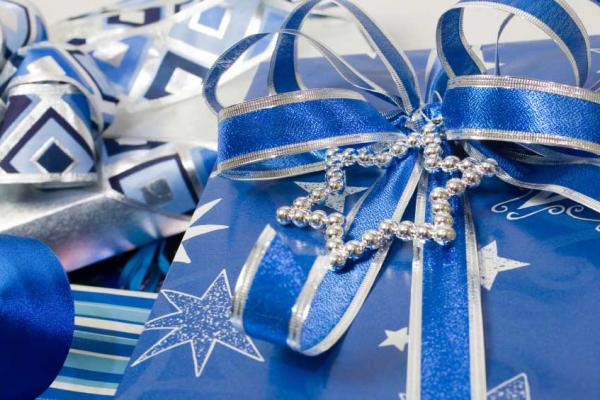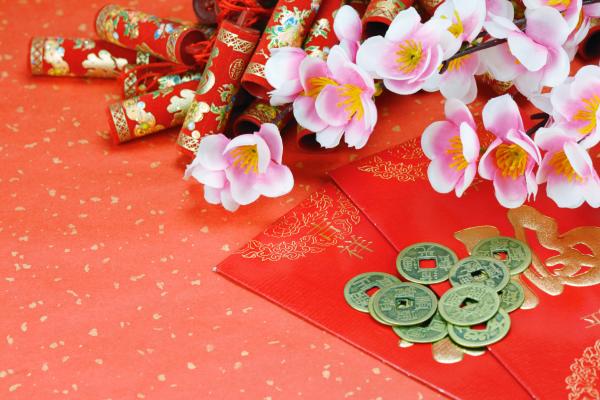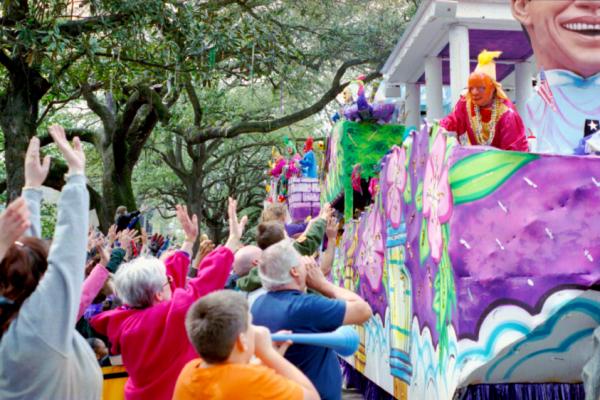Come be a part of the 25th annual FESTIVAL OF LIGHTS Kick off the holiday season with a family friendly festival for all ages – the annual Festival of Lights! Please bring your family and friends – come spend the day with us.
Give the gift of life! Schedule and appointment online at www.giveblood.org, enter sponsor code 0201 or call (979) 297-4533
Many Jewish communities in the United States observe the first day of Hanukkah, which marks the start of Hanukkah, also known as Chanukah or Festival of Lights. Hanukkah is an eight-day Jewish observance that remembers the Jewish people’s struggle for religious freedom.
 Hanukkah gifts wrapped and ready to be given.
Hanukkah gifts wrapped and ready to be given.
©iStockphoto.com/MarkCoffeyPhoto
What do people do?
Jewish communities in the United States celebrate the first day of Hanukkah on the 25th day of the month of Kislev in the Jewish calendar. The Hanukkah period lasts for eight days and is celebrated from the 25th day of Kislev to the second day of Tevet. The first night of Hanukkah (or Chanukah) starts with special blessings at sunset the day before the 25th of Kislev. Many Jewish people light the hanukiah (or chanukkiyah), which is a type of candelabrum.
Many Americans of Jewish faith also eat food fried in olive oil, such as potato cakes, and different fried breads. Hanukkah dishes include sufganiot (Hanukkah donuts), potato latkes (pancakes), mandelbrot (this can be sliced like a hard bread), and rugelach (pastry that with different fillings). The first day of Hanukkah is the start of a celebratory period in which a four-sided toy called dreidel is used for games. The first night of Hanukkah is also a night when people sing traditional songs to celebrate Hanukkah. Gift-giving is also popular at this time of the year.
Public life
The first day of Hanukkah is not a federal public holiday in the United States. Some Jewish schools have their school vacation fall around the same time of Hanukkah.
Background
Hanukkah commemorates the Jewish people’s successful rebellion against the Greeks in the Maccabean War in 162 BCE. A ritual cleansing and re-dedication of the Temple occurred after the Jewish people’s victory. It is believed that there was only enough consecrated oil to keep the lamp burning for one day but the small bottle of oil miraculously lasted for eight days. Hanukkah, also known as Chanukah, is referred as the Feast of Lights or Festival of Lights for this reason.
Moreover, the survival of Judaism over the many years is also celebrated during this period. The last day of Hanukkah, which marks the end of Hanukkah, falls on the eighth day of this period.
Symbols
The dreidel is a toy that is popular during the Hanukkah celebrations. It is a spinning top with a different Hebrew letter inscribed in each of its four sides – the four letters form an acronym meaning “a great miracle happened here”. The hanukiah (or chanukkiyah) is a type of candelabrum that holds eight candles to commemorate the eight days that the oil burned and a ninth candle that sits apart, known as the shamash, or servant candle that lights the others. One candle is lit on the first night, another on the second, and so forth until all candles are lit on the last night.
About Chanukah/Hanukkah (first day) in other countries
Read more about Chanukah/Hanukkah (first day).
Chanukah/Hanukkah (first day) Observances
Note: Jewish holidays begin at sundown the day before the date specified for the holiday.
Courtesy of DateandTime.com
The Advent season marks the beginning of the Christian year across many western churches in the United States. Its length varies from 22 to 28 days, starting on the Sunday nearest St Andrew’s Day and encompassing the next three Sundays, ending on Christmas Day.
 Advent wreaths can be seem in some churches in the United States during the Advent season.
Advent wreaths can be seem in some churches in the United States during the Advent season.
©iStockphoto.com/Dušan Zidar
What do people do?
Many Christians in the United States attend a church service on the first Sunday of Advent and may engage in activities such as special prayers and contributing to ideas on enhancing peace. Many Advent traditions are observed in the United States in the prelude to Christmas Day. For example, the Advent wreath is becoming increasingly popular in the United States. The wreath can be seen in various churches across the nation around this time of the year.
Advent calendars of all designs are also given as gifts at this time of the year. The calendars feature openings in the form of windows or doors that are numbered to count the days to Christmas. Calendars may contain chocolates, toys, or candy and are given to children as a fun way to observe the Christmas countdown. Some traditional Advent calendars show 24 days but many Advent calendars showing 25 days, with the last opening on Christmas Day.
The church year begins in September 1 in many eastern Christian churches, so Advent begins at a different time to when it starts in the western churches. The eastern equivalent of Advent is called the Nativity Fast, which runs for 40 days.
Public life
The first Sunday of Advent is not a nationwide public holiday in the United States. However, churches may be busy on this day, as well as families who use the beginning of Advent as a time to prepare for the Christmas season.
Background
It is uncertain as to when exactly the celebration of Advent was first introduced in the Christian church. Some sources say that Advent began on November 11 (St Martin’s Day) at some time in the fifth century in the form of a six-week fast leading to Christmas. Advent was reduced to its current length at some stage in the sixth century and the fasting was later no longer observed. Advent is originally a time to reflect and prepare for Christmas similarly to how Lent is in preparation for Easter. Advent has sometimes been referred to as the Winter Lent. In recent times the restrictions that Advent brings to Christians have become more relaxed.
Advent traditions spread from Europe to the United States, especially the Advent calendar, which became very popular in the United States after World War II as American military personnel and their families who were stationed in Germany brought them home and made them a part of the pre-Christmas traditions. Some people credit President Dwight Eisenhower with helping the tradition of the Advent calendar spread in the United States during the 1950s.
Symbols
Purple is historically the main color used for Advent because it reflects penitence, fasting, and the color of royalty to welcome the Advent of the king (Jesus Christ). The focus of the entire season is the celebration of the birth of Jesus the Christ in his first Advent, and the anticipation of the return of Christ the King in his second Advent. Some churches use other colors in recent times. For example, some churches mark the third Sunday of Advent with pink or rose, colors that represent joy. Many Protestant churches use blue to distinguish the Season of Advent from Lent.
Advent wreaths are symbolic of Advent. They are usually made of fir and decorated with gold and silver ribbons or scarlet woolen threads. Lit wreaths may be displayed on the table where family and friends sit while singing carols and preparing handmade gifts.
About First Sunday of Advent in other countries
Read more about First Sunday of Advent.
Courtesy of DateandTime.com
Stop by for a holiday treat! Meet the staff, participate in Group X class demonstrations and enjoy some holiday cheer from your Parks & Recreation Department.
Group X Class Sampler from 9:00am-noon and 5:30-8:30pm
Christmas movie and hot chocolate or cider! Sit back, relax and enjoy a holiday movie with the family on our giant 16-ft screen! Bring your own lawn chairs or blankets.
Are you always finishing your holiday shopping on December 24th? Do you need some down time to relax before the rush of the holidays hits? How about time to pack before heading off to see friends & family? Then this is the time for you! We will host an evening of fun & games for your children while you shop, relax or do whatever you need to!
Many people in countries such as the United States celebrate Chinese New Year, also known as the Spring Festival or the Lunar New Year. It marks the first day of the New Year in the Chinese calendar.
 Chinese New Year decorations, including red envelopes for money.
Chinese New Year decorations, including red envelopes for money.
©iStockphoto.com/Liang Zhang
What do people do?
Many individuals and communities, particularly Chinese communities, in the United States take part in the Chinese New Year celebrations, which can last for days. Chinese New Year celebrations in the United States have, over the years, included activities and events such as:
- Chinese New Year parades featuring colorful costumes, floats, firecrackers and other attractions.
- Various dances, including lion and dragon dances.
- Chinatown fun runs or walks.
- Balls and pageants.
- Street fairs.
- Firework displays.
Some organizations may hold special contests or make announcements to coincide with Chinese New Year. For example, some newspapers or magazines may announce the top 10 Chinese restaurants in a city or town on Chinese New Year. It is customary for many Chinese-American families to spend time together and exchange gifts, including money wrapped in red and gold packages that are usually given to children.
Public life
Chinese New Year is not a federal public holiday in the United States. However, some Chinese businesses may be closed on the day or amend their business hours to take part in the Chinese New Year festivities. There may be heavy traffic and some streets may be closed in towns or cities where Chinese New Year celebrations are held.
Background
According to the U.S. Census Bureau (Census 2000: Chinese Largest Asian Group in the United States; March 4, 2002), the Chinese comprised more than 20 percent of the 11.9 million people who identified themselves as Asians in the United States’ Census 2000. That translates into 2.7 million reporting as Chinese – the largest Asian group in the United States.
Chinese historical organizations in the United States can trace the arrival of the Chinese in North, Central and South America as far back as the 1600s. Many Chinese immigrants settled in the United States during the 19th century. With immigration, came Chinese traditions and events such as Chinese New Year, which is now largely celebrated in many communities across the United States.
Symbols
Chinese New Year has various symbols and traditions. For example, flowers are an important part of New Year decorations. Writings that refer to good luck are often seen in homes and business environments. They are usually written by brush on a diamond-shaped piece of red paper. Tangerines and oranges are also displayed in many homes and stores as a sign of luck and wealth.
Envelopes with money (Hong Bao, Ang Pao, or Lai See) often come in the color red, which symbolizes happiness, good luck, success and good fortune. These envelopes are mainly given as presents to children. Each Chinese New Year is associated with an animal name for one of 12 animals in the Chinese zodiac.
About Chinese New Year in other countries
Read more about Chinese New Year.
Courtesy of DateandTime.com
Mardi Gras is a holiday in some parts of the United States and often serves as a festive occasion featuring large celebrations. It is also known as Shrove Tuesday, as it is the last day before the long fast for Lent in many Christian churches.
 Mardi Gras festivals often feature parades and large crowds in the United States.
Mardi Gras festivals often feature parades and large crowds in the United States.
©iStockphoto.com/sandoclr
What do people do?
Shrove Tuesday is the last day before Lent, a period for fasting. It is also known as Fat Tuesday, or Mardi Gras, and features large festivals and celebrations across the United States. The Mardi Gras parade in New Orleans, in Louisiana, is typical of the masquerades and dancing in the streets that take place in other parts of the United States before the long Lenten fast.
Traditional Mardi Gras parades in New Orleans spotlight the King of the Carnival and the Monarch of Merriment, as well as Comus, the God of Revelry. Many people dress up in eye-catching costumes and a spectacular ball is held. Debutantes are introduced at the Ball Tablaeu as a formal introduction to society.
People throw trinkets to crowds as part of the customary “parade throw” at New Orleans’ Mardi Gras celebration. During the Bacchus parade, the king’s float throws doubloons with the image of the “Celebrity King” on one side of the doubloon (cups and toy coins) to parade watchers. Traditional Mardi Gras food includes the King Cake in which a pecan or charm is hidden. The person who gets a piece of the cake with the charm or nut is dubbed the “king” of that year’s Mardi Gras.
The Mobile and Baldwin counties in Alabama also celebrate Mardi Gras. Parade schedules start as early as January and feature marching bands, colorful floats, and crowds of parade goers along the streets in downtown Mobile. Galveston, in Texas, hosts its own Mardi Gras celebration, which features masked balls, a royal coronation, Cajun dances, jazz performances and parades with floats.
Public life
Mardi Gras is a state holiday in Louisiana. It is also marked as a holiday in the Baldwin and Mobile counties only in Alabama. Governing authorities of any municipality or county in Mississippi can declare this event as a holiday to replace any legal holiday except Martin Luther King’s Birthday (which is combined with Robert E Lee’s Birthday in the state).
Background and Symbols
Mardi Gras in the United States was first observed in Mobile when it was a colony of French soldiers in 1703. Mardi Gras was transformed into a parade event in 1840 by the Cowbellion de Rakin Society, the first of Mobile’s organizations that journeyed to New Orleans in 1857 to help a group there set up a Mardi Gras celebration. The first Carnival society, known as the Mistick Kreweof Comus, took part in coordinating the event that year.
The event was well received and continued until it was suspended during the American Civil War. Mardi Gras was one of the first local institutions to be revived after the war. It reappeared in 1866 and has continued to grow in modern times. A general article about Shrove Tuesday worldwide covers more information about its background and symbols.
About Shrove Tuesday/Mardi Gras in other countries
Read more about Shrove Tuesday/Mardi Gras.
Courtesy of DateandTime.com
